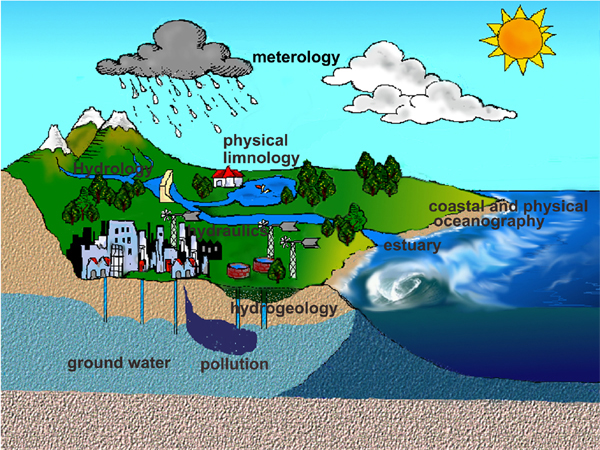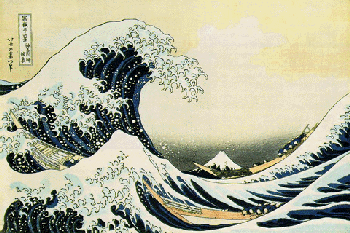-
CEE618 Environmental Fluid Mechanics
Home Page
Instructor: Chin
H. Wu
Email: chinwu@engr.wisc.edu
 e
e 
This course will introduce a wide
range of environmental
fluid flows, such as porous media, water waves,
flight of birds and insects, particle
settling, swimming
of organisms, land runoff, channel flow, and effluent
discharge. Observations and
physical intuition
for understanding physical processes in the flow environment
are emphasized.
Analytical and perturbation
techniques will be then used to derive governing equations for
further elucidating flow
phenomena. The goal of
this course is to provide systematic analysis tools and basic
skills for study fluid mechanics in
natural and constructed
environmental flows. |
Course Outline:
I. Overview of
environmental
fluid mechanics and problems
II. Review of fluid
kinematics and conservation laws
III. Dimensional
analysis (Buckingham
Pi theorem, scaling analysis)
IV. Inviscid flow
(Euler equations,
Bernoulli's equation, vortex dynamics)
V. Potential flow
(porous media flow,
surface waves in oceans and lakes, aerodynamic flow)
VI. Creeping flow (Stokes'
flow, settling,
Hele-Shaw flow, swimming of organisms, mud flow)
VII. Laminar flow (channel and
overland flow, stagnation
flow, transient and oscillatory boundary layer,
induced streaming, mass transport)
VIII Turbulent flow (instability,
characteristics,
averaging, Reynolds and turbulent kinetic eqns,
applications: effluent discharge, boundary layer)
Textbook:
Fluid Mechanics, Pijush K. Kundu, Academic
Press, Inc. 1990
Grading:
Homework
40%
Midterm
30%
Final
Project/Exam
30%
Lectures:
M & W, 9:55 ~ 11:30 A.M., 1213 Engineering
Hall
Office Hours:
M & W: 3:00-5:00 P.M.,
1269D Engineering
Hall
Final Project
1999
Class Project
- A Study of Wave Propagation: Theory
and
Govering Equations
- The Best Wave Run-up Model on the
Great
Lakes
- Application of Fluent Commerical
Software Package in Environmental
Fluid Mechanics
- Analysis of Flow Field Alterations
Caused by Hydrodynamic
Obstructions
2000
Class Project: 
- Wind Speed Measurement over Shore
and
Water Surface
- Exploratory Hydrodynamic Analysis
of
LakeMendota
- A Comparison of the Governing Fluid
Mechanic Equations Used
for Submerged Vane Analysis
- Methods of Determining Ship
Resistance
- Analysis and Summary of Submerged
Vane
Theory
 e
e 